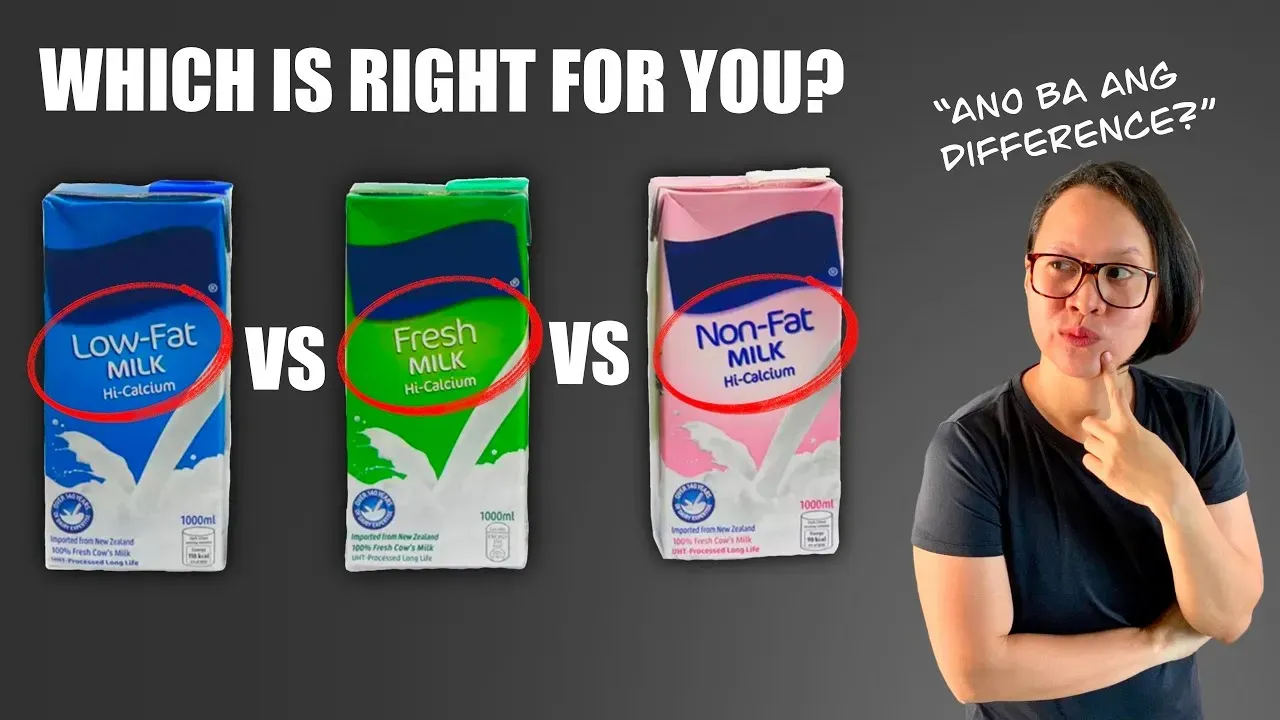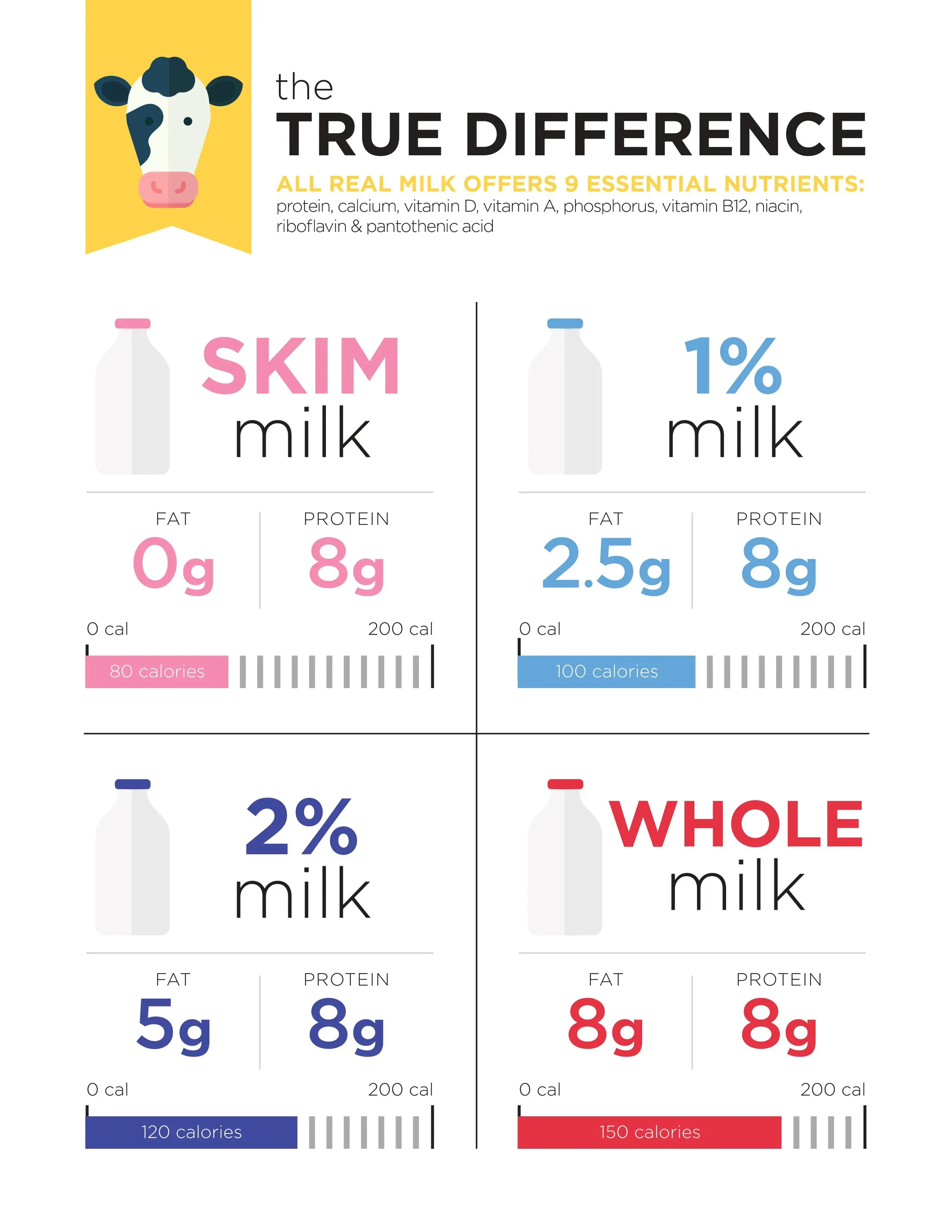Table of Contents
Walk down the dairy aisle and you're faced with choices. Skim, 1%, 2%, and then there's the old reliable: whole milk. For years, we've been told low-fat is the way to go, shedding pounds and dodging heart trouble. But lately, whole milk is making a comeback, popping up in headlines and health blogs. This leaves a lot of people scratching their heads: when it comes to whole milk or low fat, which one should actually end up in your cart?
The Whole Milk or Low Fat Debate: What's the Real Story?
The Whole Milk or Low Fat Debate: What's the Real Story?
For decades, the official line was clear: fat is bad, saturated fat is worse, so ditch the whole milk and grab the skim. This advice, fueled by early dietary guidelines aimed at reducing heart disease, pushed millions toward low-fat dairy, making the whole milk or low fat choice seem like a no-brainer for anyone remotely health-conscious. Supermarkets reorganized, recipes were rewritten, and whole milk became the slightly shameful, indulgent option you only reached for when making something truly decadent or perhaps if you were just giving up entirely.
Breaking Down the Differences: Fat, Calories, and Nutrients
Breaking Down the Differences: Fat, Calories, and Nutrients
It's All About the Fat, Right?
let's get straight to the obvious difference when we talk about whole milk or low fat options: the fat content. It's right there in the name, after all. Whole milk, by definition, contains around 3.25% milk fat. That might not sound like a huge number, but it makes a big difference compared to the other guys. 2% milk has, well, 2% fat. 1% has 1%, and skim milk is practically fat-free, usually less than 0.5%.
This percentage might seem small, but it totally changes the makeup of the milk. Think of it like adding a tiny bit of oil to water – it affects everything from the texture to how your body processes it. This fat isn't just filler; it carries flavor and contributes to that creamy mouthfeel whole milk is known for. Removing it fundamentally alters the product.
Calories Count, and Fat Adds Them Up
Naturally, that difference in fat content translates directly into a difference in calories. Fat is more calorie-dense than protein or carbohydrates. A cup of whole milk clocks in at roughly 150 calories. Compare that to a cup of 2% milk at about 120 calories, 1% at around 100 calories, and skim milk at a lean 80 calories. If you're strictly counting calories, the numbers clearly favor the low-fat versions.
This is where the traditional advice came from – cut the fat, cut the calories, lose weight. It's simple math on the surface. However, the story doesn't end there. How those calories are packaged and what else comes with them matters just as much, if not more, in the long run for your overall health and how satisfied you feel after drinking it.
Milk Type | Approximate Fat per Cup | Approximate Calories per Cup |
|---|---|---|
Whole Milk (3.25%) | 8g | 150 |
2% Milk | 5g | 120 |
1% Milk | 2.5g | 100 |
Skim Milk | < 0.5g | 80 |
Beyond the Big Three: Vitamins and Absorption
Beyond fat and calories, there's the nutrient profile. All types of milk are good sources of protein, calcium, potassium, and B vitamins. However, those fat-soluble vitamins – vitamins A, D, E, and K – are naturally present in the fat portion of milk. When the fat is removed to make low-fat or skim milk, these vitamins go with it. Milk processors usually add vitamins A and D back in (fortification), but the levels and how well your body absorbs them might be different.
Think about it: some nutrients need fat to be properly absorbed by your body. Vitamin D, for example, works best when consumed with fat. So, while skim milk is fortified with Vitamin D, the lack of fat might mean you're not getting the full benefit compared to drinking whole milk, where the natural fat helps with absorption. It's a detail often missed in the simple "low fat is healthier" narrative.
Choosing Your Pour: Is Whole Milk or Low Fat Better for Your Goals?
Choosing Your Pour: Is Whole Milk or Low Fat Better for Your Goals?
so we've dissected the nutritional labels and stared down the fat grams. Now comes the practical part: deciding which carton to grab. The truth is, there's no single "better" option in the whole milk or low fat showdown that applies to everyone. Your choice hinges entirely on your individual health goals, dietary needs, and even your lifestyle. Are you trying to cut calories aggressively, or are you more focused on nutrient absorption and feeling satisfied? Are you dealing with specific health conditions that might be influenced by fat intake? These are the questions that actually matter when you're standing in front of the dairy case, not just blindly following decades-old, oversimplified advice.
Beyond the Numbers: Taste, Texture, and Practical Considerations
The Creamy Divide: Taste and Texture
Let's be honest, numbers on a nutrition label only tell part of the story. When you pour a glass of whole milk or low fat, your senses immediately notice the difference. Whole milk has a richness, a viscosity that coats your tongue and leaves a satisfying feeling. It tastes fuller, sweeter almost, even though the sugar content is the same. This is the magic of fat – it carries flavor compounds and creates that luxurious mouthfeel. It's why a splash of whole milk transforms your coffee into something more decadent, or makes a bowl of cereal feel like a proper meal.
Low-fat and skim milk, on the other hand, are much thinner. They can feel watery, lacking that body and richness. While some people prefer this lighter feel, others find it less satisfying. The flavor can be less pronounced, sometimes even tasting slightly metallic or just... thin. If you grew up on whole milk, switching to skim can feel like drinking white-colored water. It's a textural and flavor compromise that, for some, isn't worth the saved calories.
Beyond the Glass: Cooking, Baking, and Practicalities
The choice between whole milk or low fat isn't just about drinking it straight. How you plan to use it matters too. Whole milk is often the preferred choice for cooking and baking because the fat contributes to richness, helps carry flavors, and creates tender results. Think about making a creamy sauce, a rich custard, or moist baked goods – the fat in whole milk plays a crucial role in the final texture and flavor. Swapping in skim milk can sometimes lead to thinner sauces, less tender baked goods, or a less satisfying overall outcome.
There are also practical points like shelf life and cost. Generally, lower fat milks tend to have a slightly longer shelf life than whole milk because the fat can sometimes contribute to spoilage. However, the difference is often minimal with modern pasteurization and refrigeration. Cost-wise, there's usually not a huge difference between whole milk or low fat options from the same brand, though it can vary by region and store. It's rarely the deciding factor for most people.
- Whole milk offers richer taste and creamier texture.
- Low-fat milk is thinner, potentially less satisfying flavor-wise.
- Whole milk excels in cooking and baking for richness and texture.
- Low-fat milk might lead to thinner results in some recipes.
- Shelf life and cost differences are usually minor.
Making Your Dairy Choice: Whole Milk or Low Fat?
So, after wading through the details, the big takeaway on whole milk or low fat isn't a simple "this one wins." It turns out the "best" milk is less about a universal truth and more about your personal circumstances. Whole milk brings more fat and a different nutrient profile, which might be beneficial for some, while low-fat options offer fewer calories and less saturated fat, fitting other dietary strategies. Consider your overall diet, your health objectives, and yes, even what tastes good to you. The dairy aisle choice doesn't have to be a source of stress. It's just about picking the option that aligns best with where you're headed.
